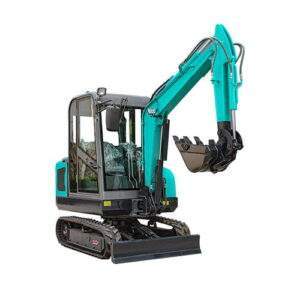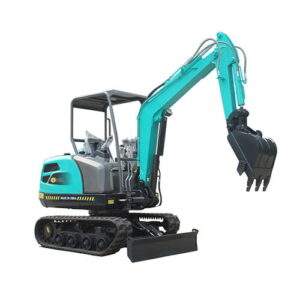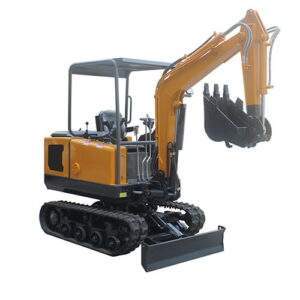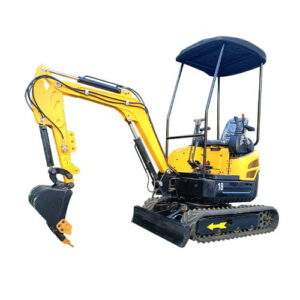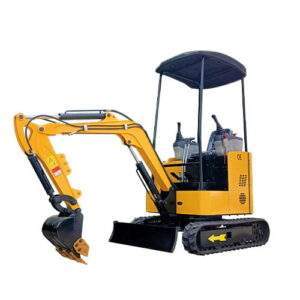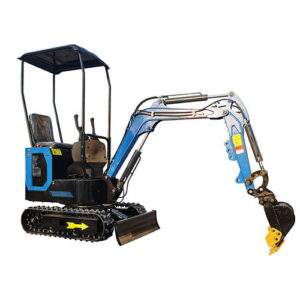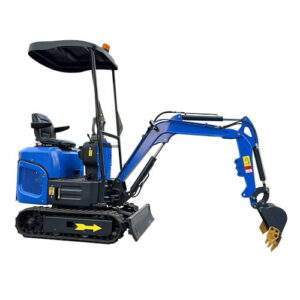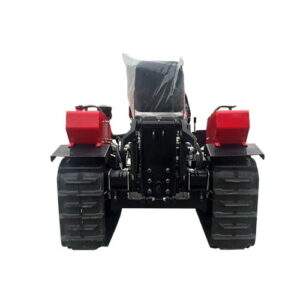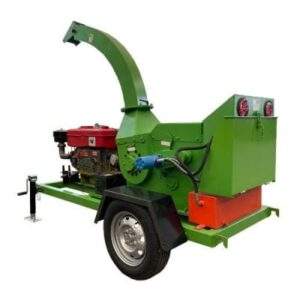5 Must-Know Maintenance Tips to Extend the Life of Your Mini Excavator
Introduction

Mini excavators are indispensable tools in the construction industry, offering versatility and efficiency in various projects. However, like any heavy machinery, proper maintenance is essential to ensure optimal performance and longevity. In this blog post, we’ll discuss five crucial maintenance tips that can help extend the life of your mini excavator, ultimately maximizing your investment in this valuable equipment.
Regular Inspections
Regular inspections are crucial for maintaining mini excavators in optimal condition. By scheduling routine checks of essential components like hydraulic systems, tracks, and attachments, you can detect signs of wear or damage early. This proactive approach not only prevents costly repairs in the future but also ensures that your mini excavator operates smoothly for an extended period. Additionally, regular maintenance enhances equipment longevity and maximizes operational efficiency. Therefore, investing time in thorough inspections is essential for the overall performance and longevity of your mini excavator.
Lubrication and Greasing
Proper lubrication is a critical aspect of maintaining the performance and longevity of your mini excavator. By reducing friction and wear on moving parts, lubrication helps to prevent premature component failure and ensures smooth operation. To achieve optimal results, it’s essential to follow the manufacturer’s recommendations outlined in your mini excavator’s manual.
The manual provides detailed guidelines on recommended lubrication intervals for various components, taking into account factors such as operating conditions, usage frequency, and environmental factors. By adhering to these intervals, you can ensure that your mini excavator remains well-lubricated and protected against excessive wear and tear.
When selecting grease for lubrication, opt for high-quality products specifically designed for heavy-duty applications. These greases are formulated to withstand the harsh conditions encountered in construction and excavation environments, including high loads, extreme temperatures, and exposure to water and contaminants. Using inferior or incompatible grease can compromise lubrication effectiveness and potentially lead to component damage.
When applying grease, pay particular attention to pivot points, joints, and bushings, as these areas are prone to high levels of friction and mechanical stress. Proper lubrication of these critical components is essential for maintaining smooth movement and preventing premature wear. Use a grease gun or appropriate lubrication equipment to ensure thorough coverage and distribution of grease.
Keep It Clean
Regular cleaning is not merely about aesthetics; it’s a fundamental aspect of maintaining the performance and longevity of your mini excavator. Beyond keeping your equipment looking pristine, proper cleaning helps prevent corrosion and buildup of debris that can adversely affect its operation and reliability. Here’s how you can effectively clean your mini excavator to ensure optimal performance:
Undercarriage and Tracks: The undercarriage and tracks are particularly susceptible to dirt, mud, and debris buildup, which can hinder movement and cause premature wear. Use a pressure washer or hose with a nozzle attachment to thoroughly clean these areas, removing any accumulated grime. Pay special attention to track links, rollers, and sprockets, ensuring that they are free from obstructions that could impede movement.
Body and Exterior Surfaces: Clean the body and exterior surfaces of your mini excavator to remove dirt, dust, and other contaminants. A mild detergent or specialized equipment cleaning solution can help dissolve stubborn residue without damaging the paint or finish. Rinse thoroughly with clean water to ensure all traces of detergent are removed.
Air Filters and Radiator Fins: Regular inspection and maintenance of air filters and radiator fins are crucial for ensuring proper airflow and cooling. Clogged or dirty air filters can restrict airflow to the engine, leading to reduced performance and potential overheating. Similarly, blocked radiator fins impede the cooling system’s efficiency, increasing the risk of engine damage. Clean or replace air filters and radiator fins as needed to maintain optimal airflow and cooling capacity.
Track Tension Adjustment
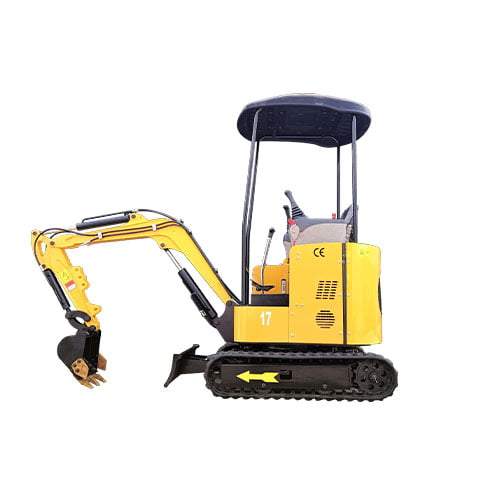
Ensuring proper track tension is crucial for maintaining optimal traction, stability, and overall performance of your mini excavator. Tracks that are too loose can result in decreased traction, increased wear on components, and a rougher ride, while tracks that are over-tightened can lead to premature failure, excessive wear, and potential damage to the undercarriage components. Here’s a more detailed guide on how to manage track tension effectively:
Periodic Inspection: Regularly inspecting the track tension is essential to identify any issues promptly. Schedule inspections according to the manufacturer’s recommendations or as part of your routine maintenance routine. During these inspections, visually assess the tracks for any signs of sagging or excessive slack.
Follow Manufacturer Guidelines: Refer to the manufacturer’s guidelines or operator’s manual for specific instructions on checking and adjusting track tension. These guidelines will provide recommended tension settings based on factors such as track type, operating conditions, and environmental factors.
Check Track Sag: One common method for assessing track tension is to measure the sag between the track and the highest point on the undercarriage. Use a suitable measuring tool, such as a ruler or a specialized track tension gauge, to determine the amount of sag. Compare the measurement to the manufacturer’s specifications to ensure proper tension.
Address Issues Promptly
Promptly address any issues or abnormalities identified during inspections or operation. Ignoring minor problems can lead to more significant issues and costly repairs down the line. Keep a detailed maintenance log to track repairs, inspections, and maintenance tasks, ensuring nothing falls through the cracks.
| Date | Issue/Abnormality Identified | Action Taken | Notes |
|---|---|---|---|
| 2024-06-01 | Excessive track wear | Adjusted track tension | Tracks tensioned evenly |
| 2024-07-10 | Hydraulic hose leak | Replaced hose | Used OEM replacement part |
| 2024-08-15 | Unusual engine noise | Inspected engine | Found loose belt, tightened securely |
| 2024-09-20 | Reduced hydraulic power | Checked fluid levels | Topped up hydraulic fluid |
| 2024-10-05 | Excessive track vibration | Inspected rollers | Cleaned and lubricated rollers |
| 2024-11-12 | Track misalignment | Adjusted track alignment | Ensured proper track alignment |
| 2024-12-20 | Abnormal engine temperature | Inspected radiator | Removed debris from radiator fins |
| 2025-01-15 | Hydraulic system sluggish | Flushed hydraulic system | Replaced hydraulic fluid and filters |
| 2025-02-28 | Excessive fuel consumption | Inspected fuel system | Replaced clogged fuel filter |
FAQ
Q: How can I prevent rust on my mini excavator?
A: Rust prevention starts with regular cleaning and proper storage. After each use, thoroughly clean your mini excavator, paying special attention to areas prone to rust, such as the undercarriage and exposed metal surfaces. Apply a rust inhibitor or protective coating to vulnerable parts, and store your equipment in a dry, sheltered environment when not in use.
Q: What should I do if my mini excavator experiences hydraulic issues?
A: Hydraulic issues can range from minor leaks to more serious malfunctions. If you notice any abnormalities with your mini excavator’s hydraulic system, such as leaks, loss of power, or unusual noises, stop operation immediately and inspect the system for damage. Check hydraulic fluid levels and connections, and consult with a qualified technician for diagnosis and repair.
Q: Are there any special considerations for winterizing my mini excavator?
A: Winterizing your mini excavator is essential for protecting it from cold weather conditions. Drain any remaining water from the hydraulic system, engine cooling system, and fuel tank to prevent freezing and damage. Use cold-weather-rated lubricants and antifreeze where applicable, and consider installing engine block heaters or insulation to maintain optimal operating temperatures in freezing temperatures.
Conclusion
Regular maintenance is the key to maximizing the lifespan of your mini excavator and minimizing downtime and repair costs. By following these five essential maintenance tips, you can ensure that your mini excavator remains in top condition, allowing you to tackle construction projects with confidence and efficiency.

